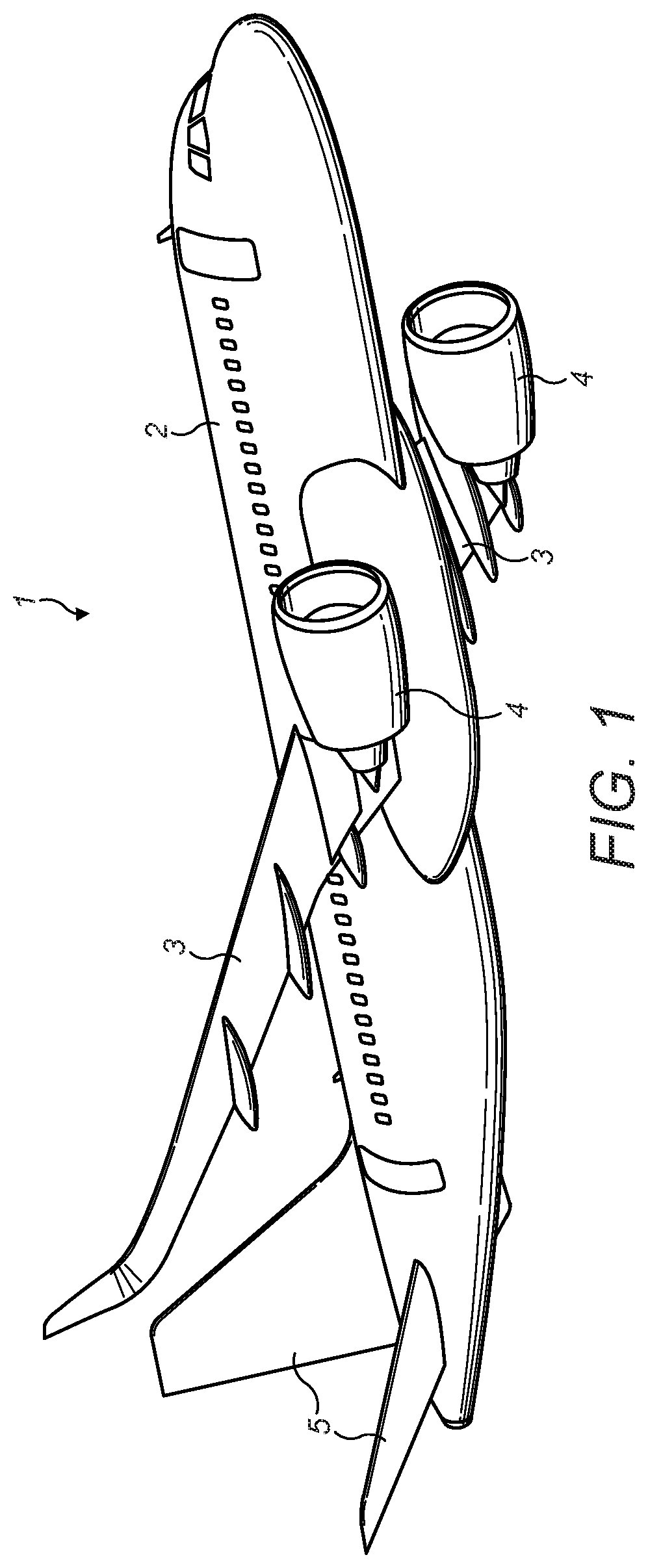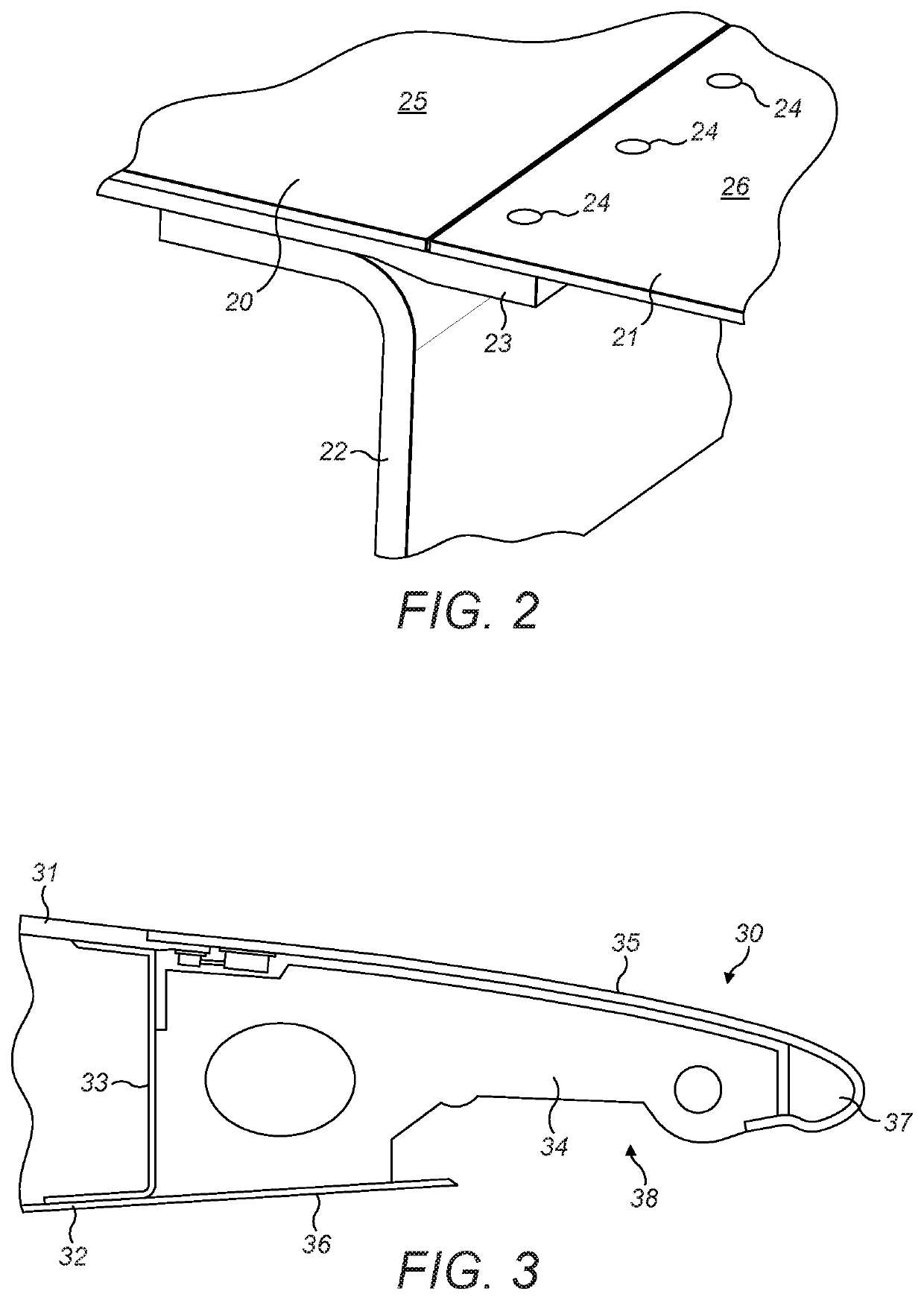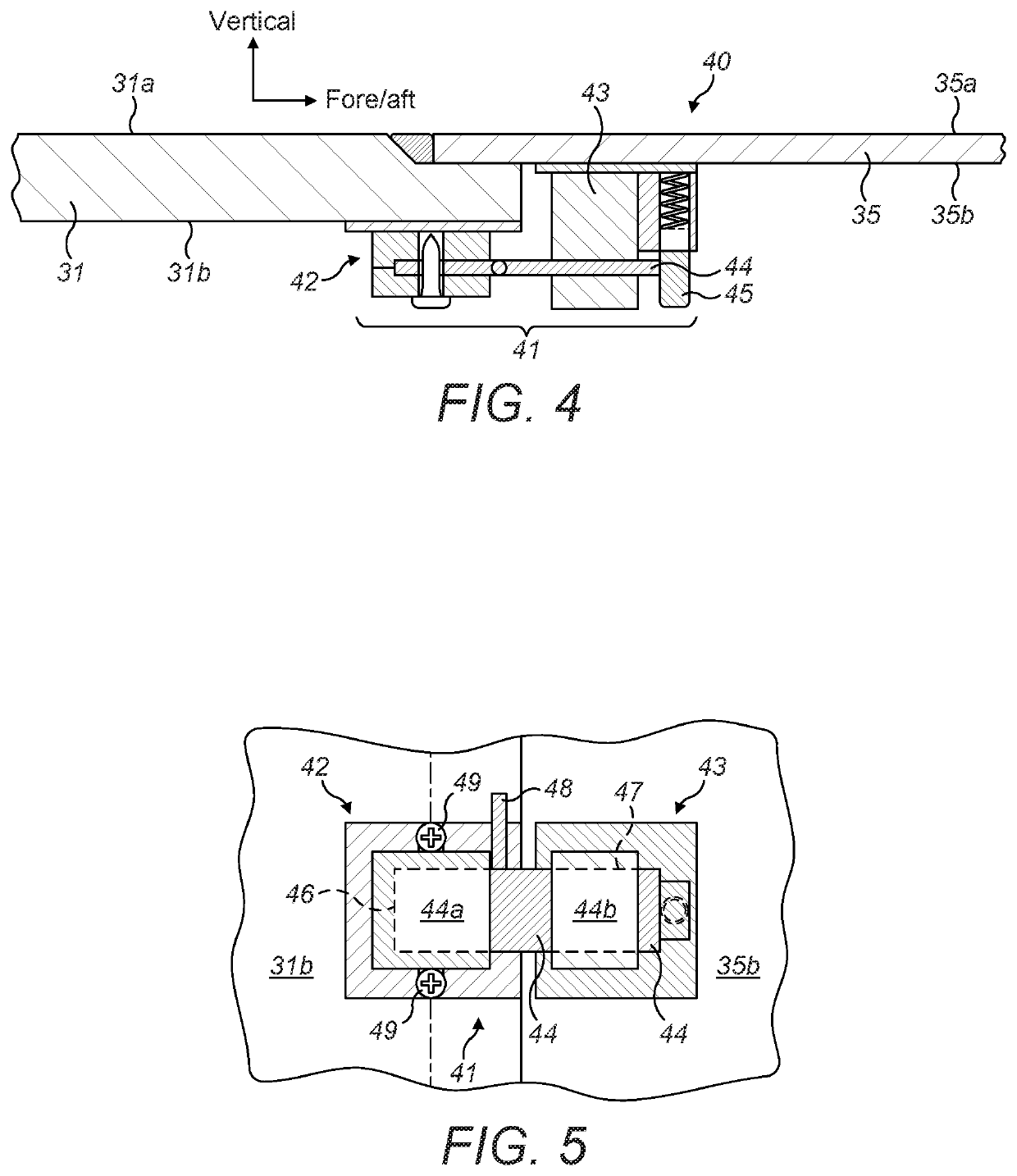Aircraft joint
a technology for aircraft wings and joints, applied in the field of aircraft joints, can solve the problems of aircraft wing leading edge panels being subjected to particularly harsh environmental conditions, fastener heads and fastener holes conventionally used to attach leading edge panels to leading edge ribs and to the wing covers are unlikely to be able to meet this step condition, and the ability to retain laminar flow is significantly affected, so as to achieve the effect of convenient assembly and/or disassembly of the join
- Summary
- Abstract
- Description
- Claims
- Application Information
AI Technical Summary
Benefits of technology
Problems solved by technology
Method used
Image
Examples
Embodiment Construction
)
[0036]FIG. 1 illustrates a typical configuration for a fixed wing passenger transonic jet transport aircraft 1. The aircraft 1 comprises a fuselage 2, wings 3, main engines 4 and horizontal and vertical tailplanes 5. It will be appreciated that this invention is applicable to a wide variety of aircraft types not just that illustrated in FIG. 1. For example, the aircraft, may be for commercial or military purposes, may be for transporting passengers or cargo, may have jet, propeller or other engine propulsion systems, may have a variety of fuselage / wing configurations, e.g. a high wing, low wing or blended wing body, and may be designed to fly at subsonic, transonic or supersonic speeds.
[0037]FIG. 2 illustrates a known joint between an upper wing cover 20 and a wing leading edge panel 21. The upper wing cover 20 is attached to a front spar 22. A forward edge of the upper wing cover 20 includes a joggle 23 and the wing leading edge panel 21 is fastened to the upper wing cover 20 by a...
PUM
 Login to View More
Login to View More Abstract
Description
Claims
Application Information
 Login to View More
Login to View More - R&D
- Intellectual Property
- Life Sciences
- Materials
- Tech Scout
- Unparalleled Data Quality
- Higher Quality Content
- 60% Fewer Hallucinations
Browse by: Latest US Patents, China's latest patents, Technical Efficacy Thesaurus, Application Domain, Technology Topic, Popular Technical Reports.
© 2025 PatSnap. All rights reserved.Legal|Privacy policy|Modern Slavery Act Transparency Statement|Sitemap|About US| Contact US: help@patsnap.com



